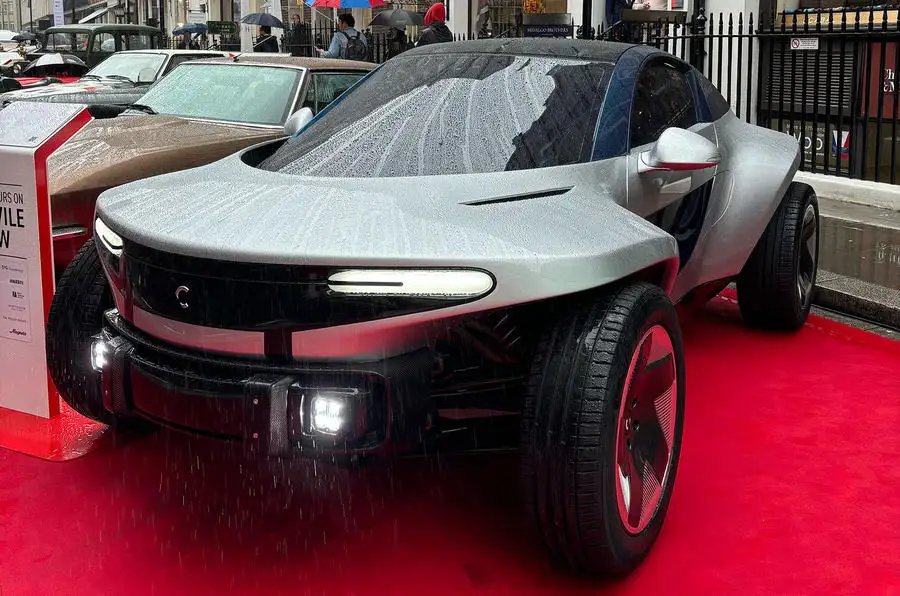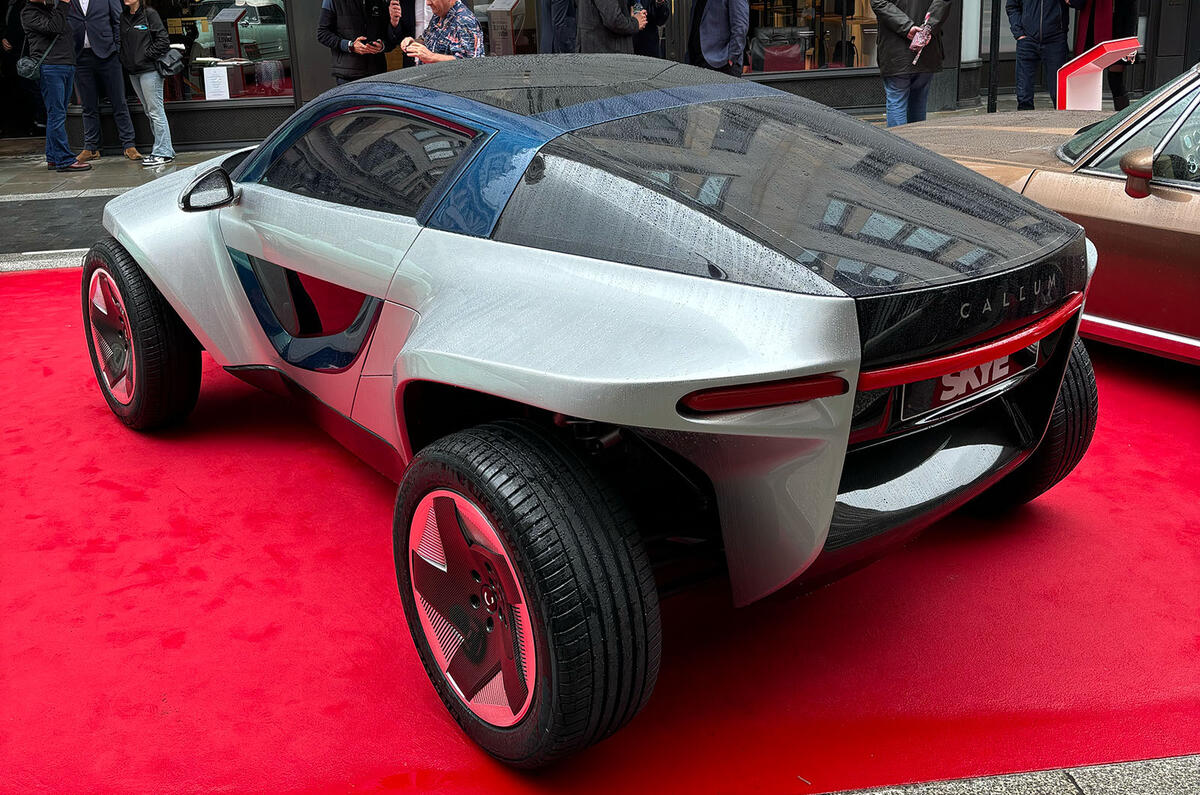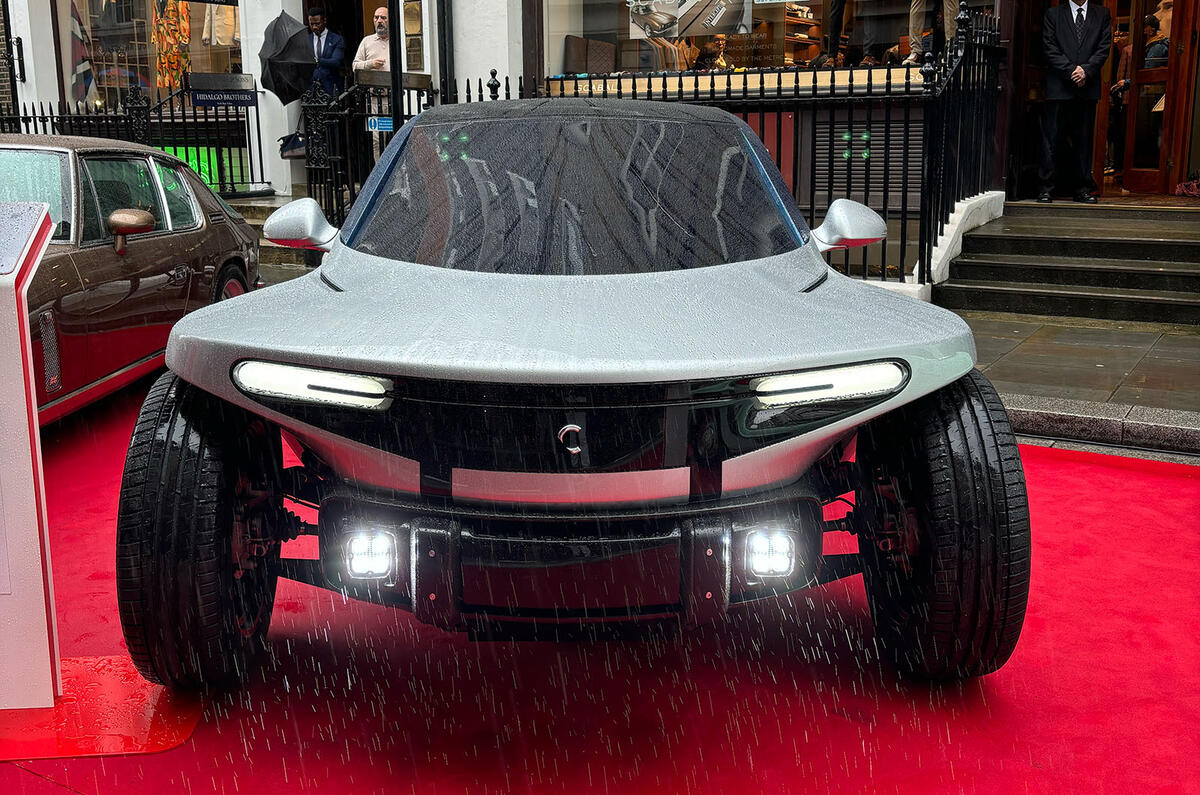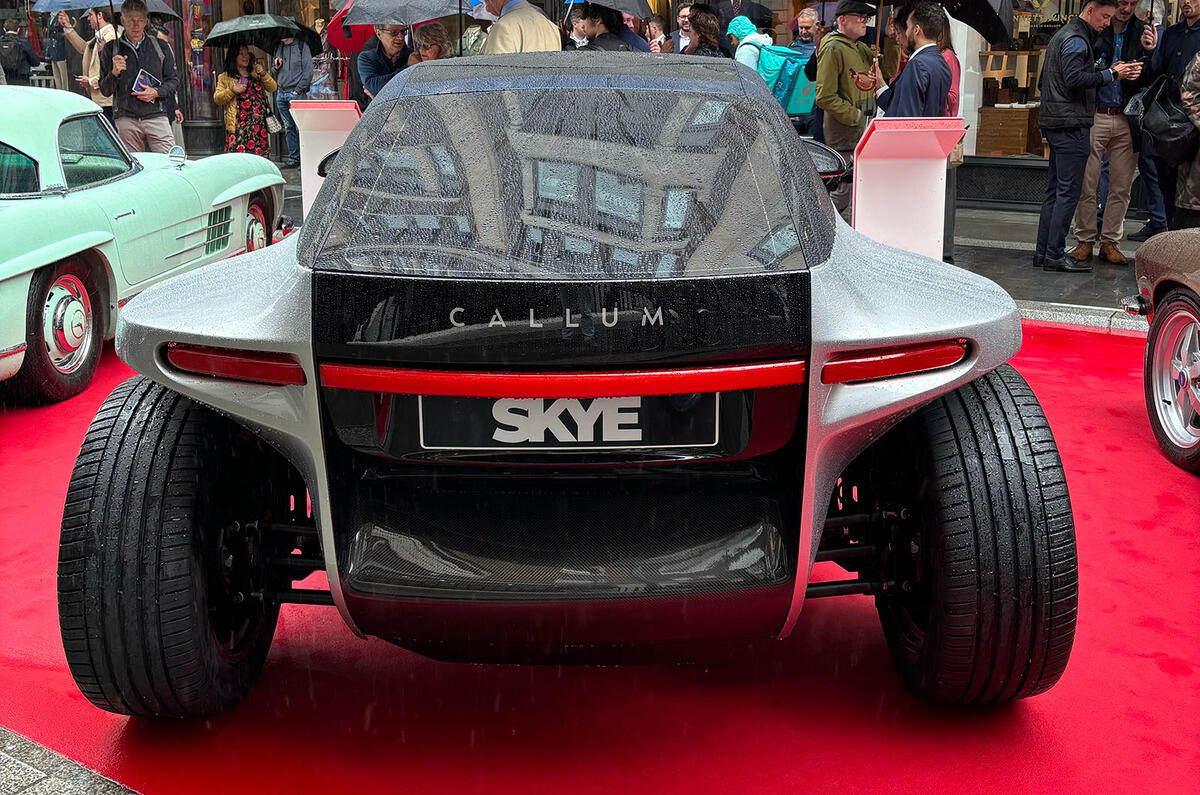Callum Skye revealed as go-anywhere EV sports car with 247bhp

The Callum Skye has been publicly revealed as the first bespoke production model created by former Jaguar design boss Ian Callum’s UK-based design and engineering firm and is touted by its creators as a “Tarmac rally car”.
Complete with two electric motors - one on each axle - and a 42kWh battery giving a claimed range of 170 miles, the Skye is a 2+2 sports car with 247bhp, 221lb ft and a 0-62mph time of less than four seconds.
The first deliveries of it are expected in summer 2026. Between 50 and 250 units will be produced per year, each priced between £80,000 and £110,000, lining the off-road electric car up against the similarly conceived Ariel Nomad, which is due to enter its second generation later this year, with an electric option set to follow.
Speaking at the car’s public debut at Savile Row Concours in London, Ian Callum told Autocar: “This is not just a pretty street car. It’s going to have real off-road capability. We’ve been working on this for two years so far, and now we're ready to start developing prototypes. So now is the right time to let the world see it, and we’ll be in production within two years.”
He added: “I do see this as a west coast of America-inspired car. It’s an off-road car, it’s a sand car, it’s a mud car, and I think the west coast will be where a lot of our customers are based.”
Callum said the car has been designed with flexibility in mind, giving customers the option of two different bodystyles.
The Skye will be available in two guises: one tailored more towards off-road ability, the other for on-road dynamics. The off-road car will feature a higher ride height and up to 100mm of suspension travel - as well as a pared-back interior with less of a focus on luxury than the on-road edition.
Customers can option either car with a fast charger, which, Callum claims, can top the battery up in less than 10 minutes.
The Skye’s bold shape, which the company says is “driven by its capabilities”, is based on a strong ‘accent loop’ surrounding the door apertures, with a horizontal body structure running through the whole car and providing mountings for the two large doors, which are glazed below the waistline as well as above it.
Measuring 4047mm long and 1900mm wide, the Skye is of a similarly compact footprint to the Renault Clio and Dacia Sandero.
Its chassis is a rugged steel spaceframe with plenty of ground clearance and travel for its bespoke all-independent suspension, and it supports a lightweight composite body for a total heft of 1150kg - making this one of the lightest EVs on the market.
Underneath, most of its chassis componentry has been developed in-house, but the battery and electric motors are sourced from an unnamed supplier. Callum director of engineering Adam Donfrancesco said: “We’ll take motors from places we like and include that with a lot of powertrain electronics that have been created for us, including wiring looms. Anything more serious we’ll get from our trusted supply network.”
Francesco added that the influence of rally cars was key in making it enjoyable to drive. He said: “It's not just about how fast it goes down the road, because it wants to have great steering feel, it wants to have nice suspension feel, it wants to be like a Tarmac rally car.”
Before customer deliveries begin in summer 2026, the Skye will be taken on a testing programme around the Midlands, as well as more extreme locations, but without the traditional testing camouflage usually worn by test mules. Ian Callum said: “OEMs camouflage the cars because they want to take them out testing. And they camouflage them because the competition is out there and they don't want other people to see it.
“We don’t really have any competition. It’s quite a unique product. So we’re not averse to letting the world see what we’re doing. We’ll be out in the open testing it.”
Callum has also shown the interior of the Skye, which has been designed to mirror the exterior but with a focus on minimalism. It features a stacked centre console with touchscreen rotary dials to control the heating and ventilation, similar to the Jaguar F-Type - also designed by Ian Callum. Sitting on top of the dashboard is a 10in central touchscreen equipped with smartphone mirroring.
As befits its versatile credentials, the Skye's boot is accessed via a hinged tailgate, and the rear bench - big enough for children - can be removed altogether for additional room.
"We want to make the car as usable as possible”, said Ian Callum. “Is ingress going to be perfect? It’s not bad. It’s easier than some sports cars. We think the inside of a classic Porsche is big enough for most people to still enjoy the car. That, in some ways, has been our dimensional benchmark.”
The Callum company’s total staff now runs to more than 20 people, although Ian Callum says the firm’s intention is always to remain “small and agile”.
As the first all-new Callum model, the Skye succeeds successful programmes unveiled since the company was founded in 2019, including a highly individualistic reinterpretation of the 2001 Aston Martin Vanquish (an Ian Callum original), a string of impressive forays into product design and some still-secret collaborative projects.
Q&A with Ian Callum, Callum's design chief
Did you consider a sports car as your first own-brand product?
“We did but decided it would be a bit predictable. We settled on something that would show our versatility, and that we’re about all kinds of vehicles, not just one.”
Will you make more bespoke Callum cars?
"That’s our intention. The Vanquish project was something we did to prepare ourselves for the phase that starts with Skye, doing our own projects. We don’t want just to be an agency for other brands. We have a way of creating simple but beautifully crafted cars with special detail design.”
Would you do the next one in bigger numbers?
“There’s lots to do before we get to that kind of decision, but if things go well we could imagine making our own cars in batches of up to 1000. David, Adam and I have been doing this car creation thing together for quite a few years. It’s not a mystery to us; we know our capabilities.”





